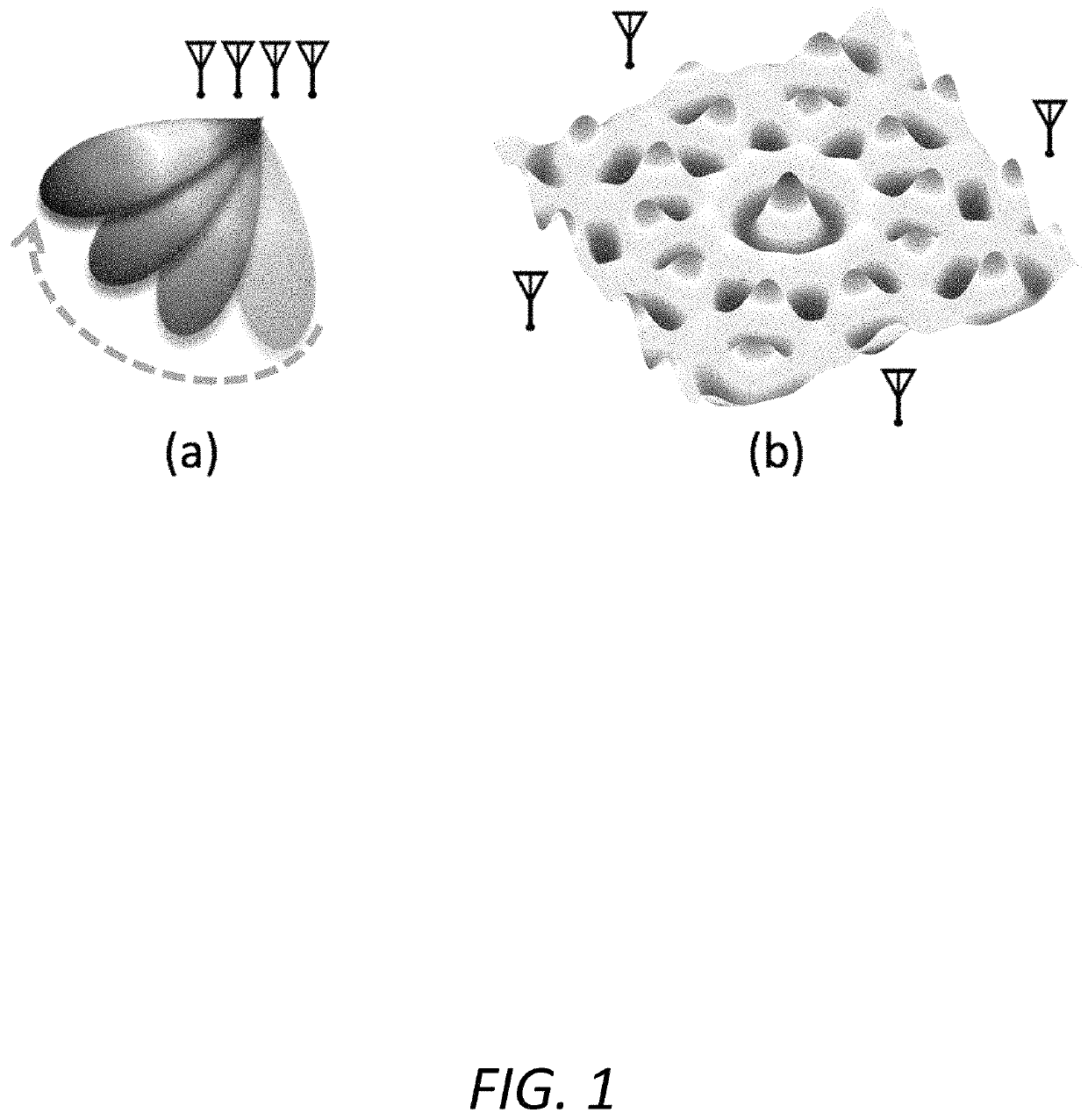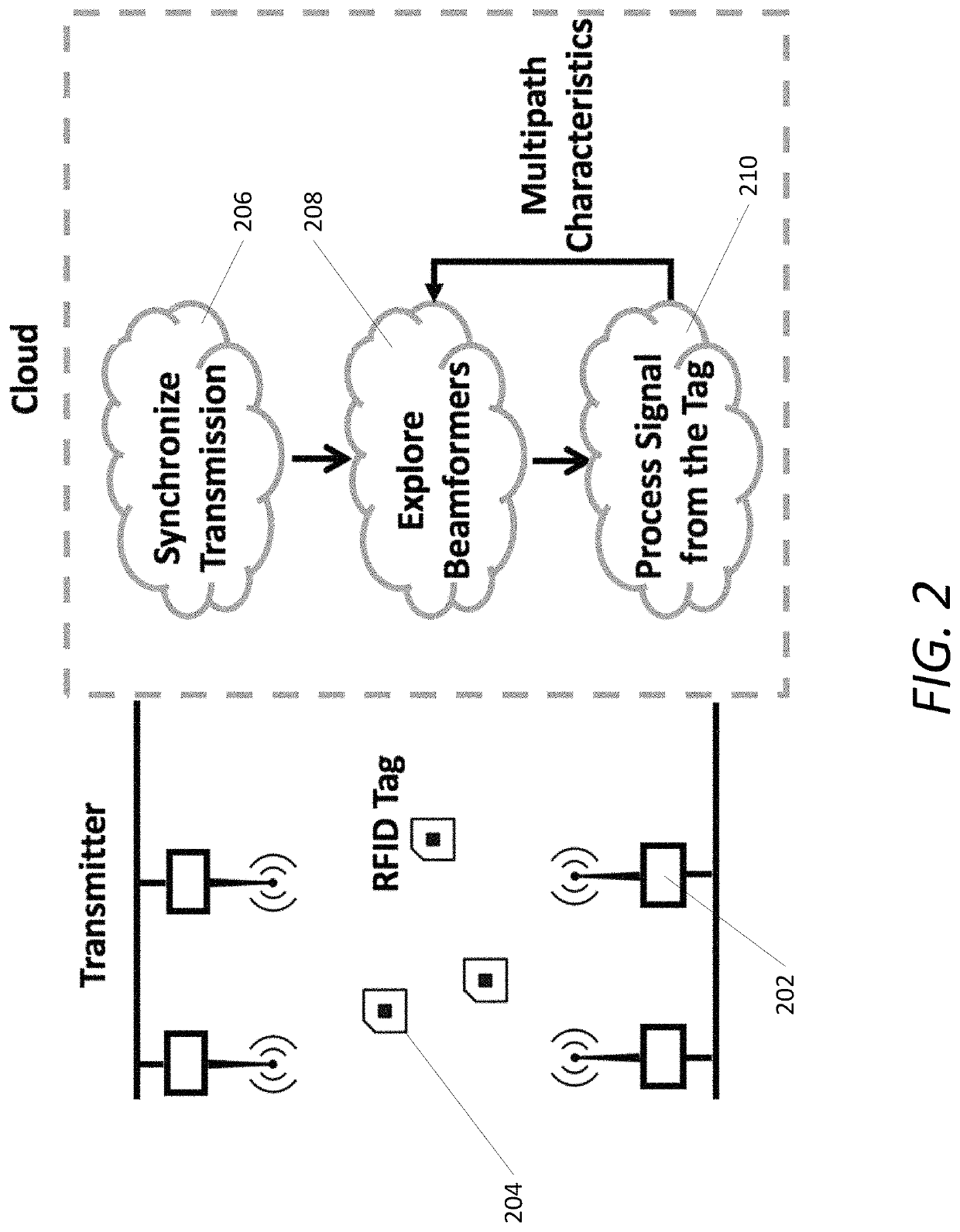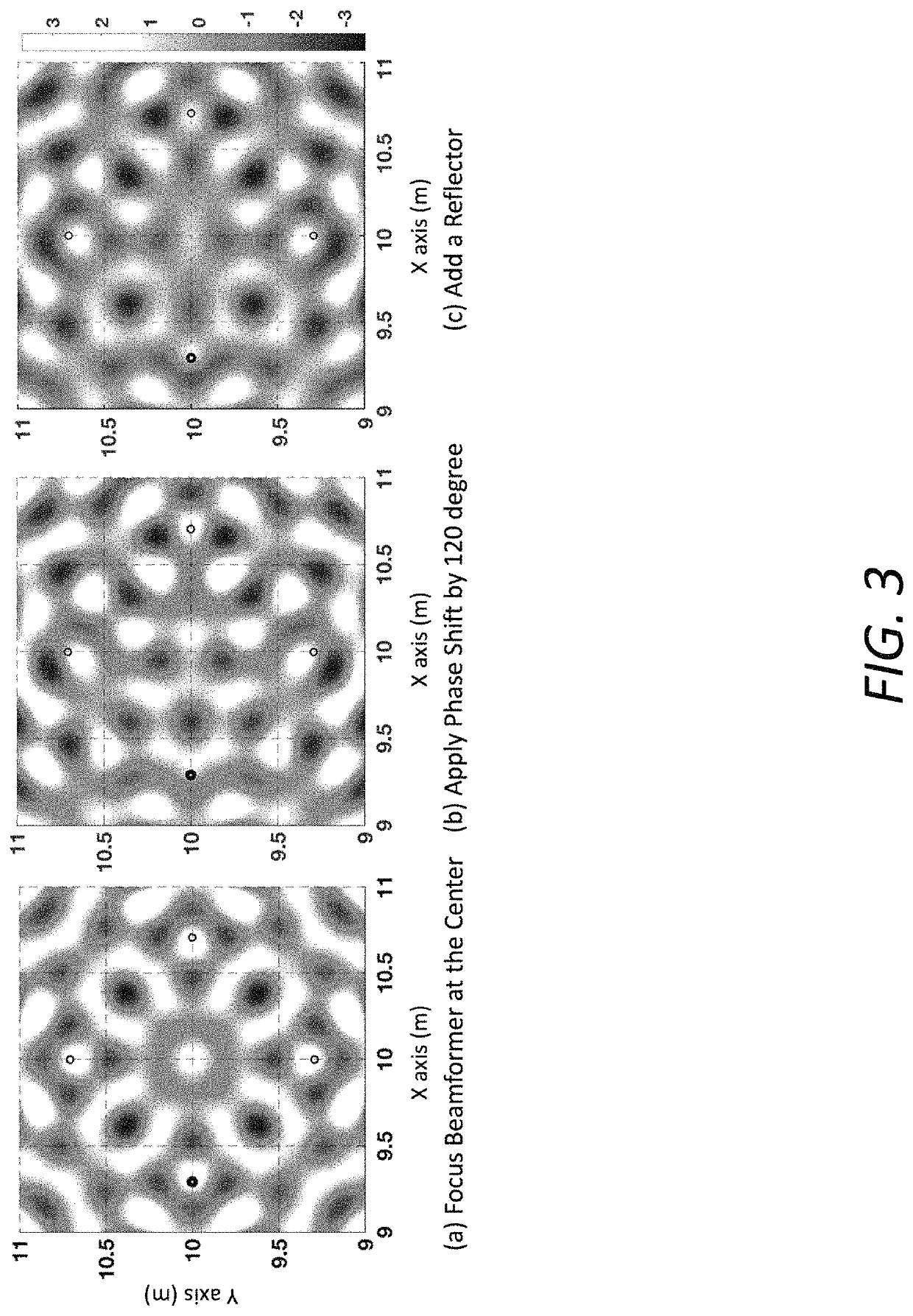Method for extending the range of commercial passive RFID elements
a passive rfid and commercial technology, applied in the field of passive commercial rfid tags, can solve the problems of consuming considerable time to beamform power to one tag, and achieve the effect of efficient search
- Summary
- Abstract
- Description
- Claims
- Application Information
AI Technical Summary
Benefits of technology
Problems solved by technology
Method used
Image
Examples
Embodiment Construction
[0027]As used herein, the terms “method”, “invention” and “system” all refer to the novel systems and methods described herein.
[0028]The novel systems and methods of the invention powers and communicates with commercial passive RFID tags via RF-backscatter from a plurality of distributed commercial RFID readers, where the tags may be beyond the communication range of any single reader. This is achieved by coherently combining signals across distributed RFID readers to maximize the received signal power at one or more RFID tags, whose location and orientation are initially unknown. Because RFID systems operate based on RF-backscatter, the method applies beamforming weights both on the transmitted and received signals to maximize energy both to and from the RFID tags. The RFID readers are connected to a wired backhaul, which allows them to coordinate transmissions and data that needs to be transmitted on the downlink. Additionally, while the locations of the RFID readers are known, th...
PUM
 Login to View More
Login to View More Abstract
Description
Claims
Application Information
 Login to View More
Login to View More - R&D
- Intellectual Property
- Life Sciences
- Materials
- Tech Scout
- Unparalleled Data Quality
- Higher Quality Content
- 60% Fewer Hallucinations
Browse by: Latest US Patents, China's latest patents, Technical Efficacy Thesaurus, Application Domain, Technology Topic, Popular Technical Reports.
© 2025 PatSnap. All rights reserved.Legal|Privacy policy|Modern Slavery Act Transparency Statement|Sitemap|About US| Contact US: help@patsnap.com



